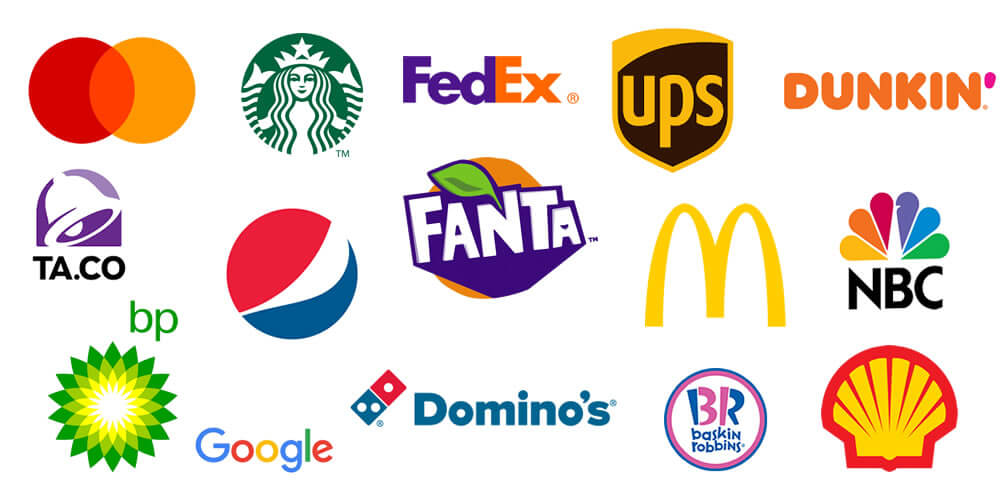Your logo is your one of few opportunities to gain a foothold within the mind of your potential clientele and to turn seeing into selling. Let’s look at 3 Signs That You Need A New Logo Design.
In my professional experience as a logo and brand identity designer I have seen the good, the bad, and the ugly; from logos containing dozens of unnecessary colours to logos that are barely legible in their best environments. Today, it’s my job to provide you with 3 signs that your logo design may be out-of-date, undermining your business, or just plain bad.
Table of Contents
1) You Need a New Logo if…Your Logo’s a Nutshell:

“Well… in a nutshell” is great for conversations, but not for the visual identity of your business, your income, your baby. If your logo is simply a summary of your business, services, and ethics then it’s time for a new logo.
You see, a proper and well established brand does not need an identity that “wraps up” the business. Your logo should be a professionally designed mark that is memorable and has a sense of mystery which keeps your audience wanting to learn more.
If your logo simply tells the entire story in one swing, then your business lacks depth, individuality, and most likely, clients.
Your logo design is the brands unique visual identifyer, it dosent need to explain!
Learn from famous brand logos: Learning from the World’s Most Famous Logos
Exercise:
Think of some of the brands you use on a daily basis. What do their “faces” look like to you? Are their logos nutshells?
2) You Need a New Logo if…Your Logo Doesn’t Play Well With Others:

This sign is very important and can have very unfortunate (and expensive) consequences. Your logo must be able to fit any format. And even then, simply fitting is not good enough, it must look appropriate as well.
From billboards to letterheads and postcards to promotional materials, your logo needs to be strategically thought out and designed to work in all of these scenarios. While on this topic, it may be wise to also discuss colouring.
Colours, as you know, add dimension to a logo, but not all scenarios permit the use of your colour spectrum and may leave your logo looking quite… ugly. When a logo is created, it should never be dependent on colors or features. A logo must be able to stand alone and play well with those around it.
Read more about: Colour phychology in logo design
Exercise:
Take your current logo and make it only one color. Is it still memorable? Does it still look professional and represent your company in the best way possible?
3) You Need a New Logo if…Your Logo Has Too Much to Say:

Complexity is the fine line that each logo must walk. Your company should not use your logo as a means to say everything and mean nothing. Your logo, as discussed before, must be that brand on the mind of your audience that is both meaningful and painless.
The rut of complexity can easily distract, distort, and disorientate your potential customers. Having a professionally made logo not only means everything, but says exactly what needs to be said at just the right moment.
Learn more about: Are Logos Better Simpler?
Exercise:
Examine your logo and ask yourself if it says too much. Is it too complicated for the general public to understand or remember?
Conclusion






Your logo should be the priority when going through the brand development process. A logo is either a business’ best friend or worst enemy, after examining the 3 signs above, it should be evident which your logo is.
If you’d like our professional opinion about your logo, please feel free to contact us.
Join The Logo Community
We hope these 3 Signs That You Need A New Logo Design have been helpful. If you would like more personal tips, advice, insights, and access to our community threads and other goodies, join us in our community.
You can comment directly on posts, access our community threads, have a discussion and ask questions with our founder Andrew.
If you’re looking to learn more about brand strategy, we highly recommend eRESONAID with our friend and acclaimed brand strategist and author Fabian Geyrhalter, it’s packed full of knowledge and insights you will need to learn to become a brand strategist or apply what you learn within your own business.


Author Bio
Andrew Marriott is the owner and founder of The Logo Creative™. He is an award-winning designer with over two decades of experience designing logos and specialising in branding for companies worldwide.
FAQ – Signs That You Need A New Logo Design
How do I know if my logo is outdated?
Your logo may be outdated if it follows design trends from a previous era or uses dated elements like drop shadows, bevels, or gradients that were popular in the 2000s. If your logo looks similar to designs from a specific time period rather than having a timeless quality, it might be time for an update. Additionally, if your competitors have all modernized their branding while your logo remains unchanged for many years, this could indicate your design needs refreshing.
What if my logo doesn't work well across different platforms?
A clear sign that you need a new logo is when your current design doesn’t scale or adapt well across different mediums. If your logo becomes illegible when reduced for social media avatars, looks pixelated when enlarged for signage, or loses detail when printed in one color, it’s time for a redesign. Modern logos need to be versatile enough to maintain their impact whether displayed on a smartphone screen or a billboard.
Does my logo still represent my business accurately?
Your logo may need updating if your business has evolved beyond its original scope or target market. For example, if you started as a local boutique but have expanded into e-commerce, or if your services have broadened significantly, your original logo might not reflect your current business identity. A logo should communicate your company’s current values, mission, and market position rather than where you were when you first started.
How can I tell if my logo is too complex?
Modern design principles favor simplicity and clarity. If your logo has too many elements, intricate details, or multiple fonts and colors, it may be too complex. A good test is whether someone can redraw your logo from memory after seeing it briefly. If they can’t, your logo might benefit from simplification. Complex logos also tend to be more difficult to reproduce across different mediums and sizes.
What role does color psychology play in logo design?
Colors evoke specific emotions and associations. If your logo’s colors send the wrong message or don’t align with your brand values, it might be time for a change. For example, if you’re an eco-friendly company but your logo uses colors associated with industrial or synthetic products, a redesign could help better communicate your brand identity.
How often should I consider updating my logo?
While there’s no fixed timeline for logo updates, most successful brands evolve their logos subtly every 5-10 years to stay current while maintaining brand recognition. However, major rebrands might be necessary sooner if your business undergoes significant changes in direction, market position, or target audience.
What are the risks of keeping an outdated logo?
An outdated logo can:
- Hamper digital marketing efforts
- Make your business appear behind the times or out of touch
- Reduce trust from potential customers
- Limit your ability to compete in modern markets
- Create inconsistencies across your brand materials
How do I start the logo redesign process?
Begin by:
- Working with a professional designer or agency experienced in brand identity
- Analyzing your current logo’s strengths and weaknesses
- Researching current design trends in your industry
- Collecting feedback from customers and stakeholders
- Defining your brand values and target audience
Collecting feedback from customers and stakeholders
What should I preserve when updating my logo?
Consider maintaining elements that have strong brand recognition or emotional connection with your audience. This might include specific colors, symbols, or overall shapes that customers associate with your brand. A successful logo update often retains the essence of the original while modernizing its execution.


